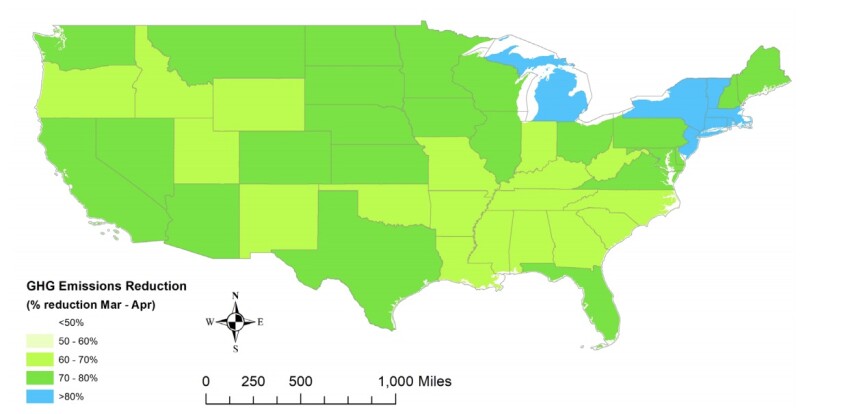Study Finds Staying at Home Helps Climate, Hurts Economy, and Shows What’s Possible for Change
Told to stay home to halt the spread of COVID-19, Americans drove 74 billion fewer miles during a week in April, eliminating millions of tons of greenhouse gases normally thrust into the atmosphere, but costing their states millions of dollars in fuel-tax revenue – including an estimated $370 million in California, a UC Davis study released Friday said.
How state lawmakers will deal with that loss of revenue is for another day and another story. For now, the study reveals, we can take a deep breath. But it also shows, its author said, what is possible to improve the environment and address climate change if Americans take advantage of what is learned during the pandemic shut down and come up with new business plans to "thrive as a species."
"We keep looking around for the problem, but the problem is us," said Fraser Shilling, co-director of Davis’ Road Ecology Center. "We don’t have to look very far for the problem. Now we don’t have to look so far for the solution. The solution should be right in front of us."
Using data from streetlightdata.com, which uses smart phones as sensors to track movement on streets, the study found Americans reduced their vehicle road mileage from 103 billion miles in early March to 29 billion miles during the second week of April after stay-at-home orders went into effect.
That additionally resulted in saving American drivers billions of dollars usually spent on gasoline and slashing the number of injuries and deaths that normally occur in vehicle crashes, the study -- “Impact of COVID-19 Mitigation on Traffic, Fuel Use and Climate Change” said.
Every state, in fact, reduced its mileage by at least 60 percent, something Shilling said was unifying.
"We know we are causing ourselves economic harm and we are well-aware of the consequences. They could be really dire,” Shilling said. “But we are doing this stuff anyway to protect ourselves to protect our health. We’ve agreed with each other at a very personal and democratic level."

Besides travel, the study also found:
- States with the highest number of COVID-19 cases and deaths had the largest drops in mileage New York, which had the most infections and deaths during the period, and its neighboring northeastern states of New Jersey, Rhode Island, Connecticut, Massachusetts and Vermont drove at least 80% fewer miles after shelter-in-place directives began. Washington D.C. had the largest drop: 90%
- Americans' fuel use dropped from 4.6 billion gallons in early March to 1.3 billion gallons in April.
- The decline in necessary trips to the gas station saved U.S. drivers $8.6 billion a week, but also cost states varying amounts of fuel-tax revenue. The study said $1.6 billion raised a week in March decreased to $424 million per week in April.
- In California, the number of miles traveled dropped more than 75%, sending fuel tax revenue -- which pays for highway construction, maintenance and other transmit improvements – plummeting from $61 million in early March to $15 million for the second week of April. The estimated loss for the eight-week order to stay at home: $370 million.
As lawmakers work on plans to try to reopen the country, the study became just the latest to show the air is cleaner, something many people can tell just by walking outside. But the decline in road travel created a 71% drop in carbon dioxide released into the air. That represented a 13% decrease in transportation-related annual emissions for 2020 and a 4% decrease of total greenhouse gas emissions for 2020 in the nation.

In California, the 75% reduction in local road travel contributed greatly to climate change targets, the study found. If traffic remains reduced by 75 percent for a year, the state would be on track to meet half of its 2050 emissions targets by 2021.
For those scoring at home, that beats the Paris Climate Accord's targets by 3 percent.
Of course, the study said, the emissions benefit could disappear if life returns to where it was when vaccines or treatments are discovered to end the pandemic. Shilling said this is an opportunity to change our lifestyles.
"Are there things we are doing differently that we can embrace that will make our lives better in the future?" he asked.
Americans have learned they can work at home and know they can make fewer runs to the grocery store.
"This has some real healing potential," Shilling said. "True leadership would be to take these lessons and the benefits that we are realizing and use those to really reshape what society can look like."





